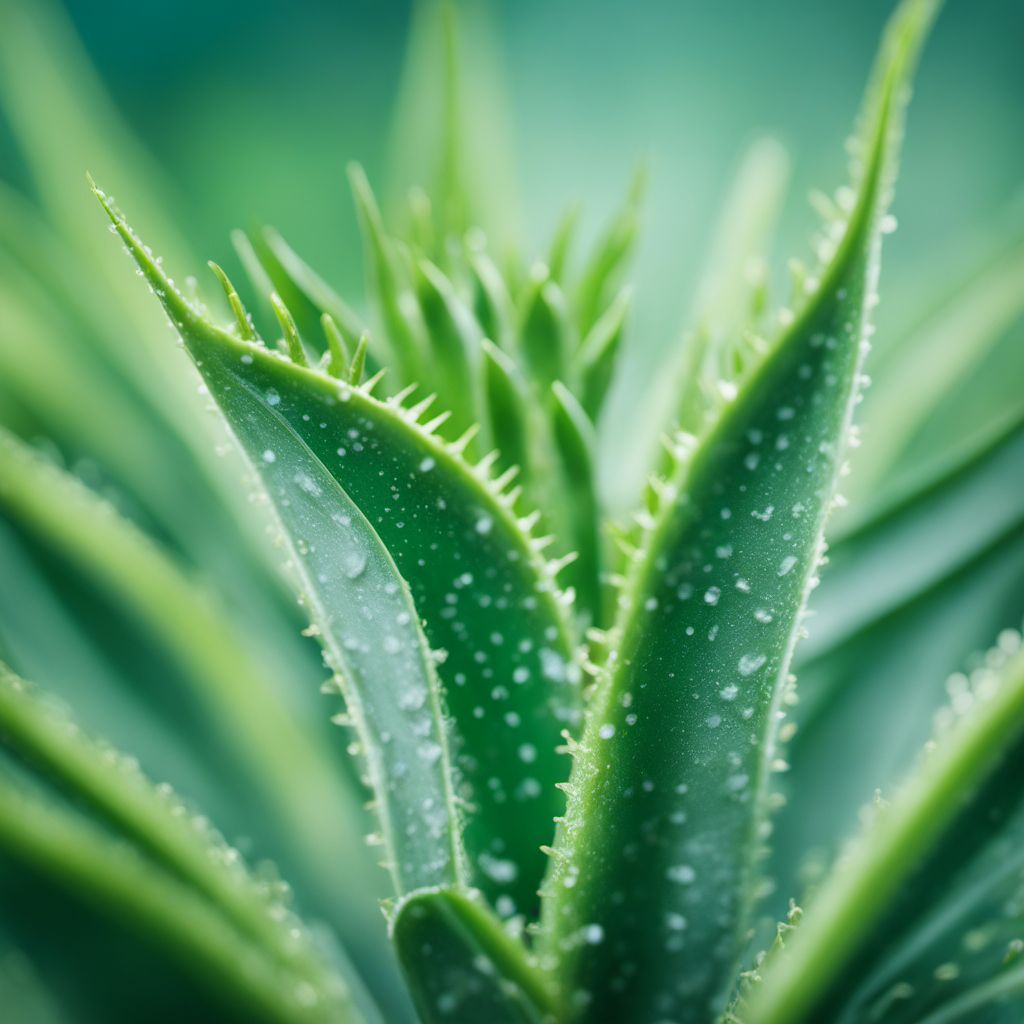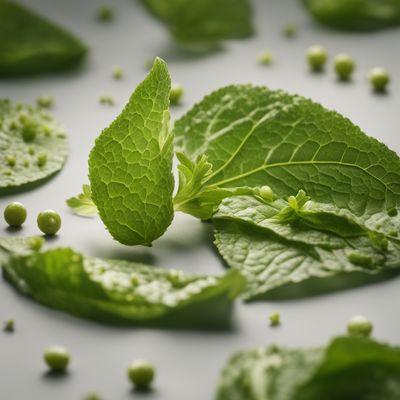
Ingredient
Aloe leaf gel (pulp)
The Healing Gel of Nature
Aloe leaf gel is a translucent, jelly-like substance found inside the leaves of the aloe vera plant. It has a cooling and refreshing texture, similar to that of a gelatinous fruit. The gel is rich in vitamins, minerals, and antioxidants, offering a range of health benefits. It has a mild, slightly bitter taste with a hint of sweetness. The gel can be used in its natural form or processed into various products.
Origins and history
Aloe vera has a long history of medicinal use dating back thousands of years. It originated in the Arabian Peninsula and has been cultivated in various regions around the world, including Africa, Asia, and the Americas. Ancient civilizations, such as the Egyptians, Greeks, and Romans, valued aloe vera for its healing properties. It was used to treat wounds, burns, and skin conditions. Today, aloe leaf gel is widely recognized for its soothing and moisturizing effects on the skin, as well as its potential health benefits when consumed internally.
Nutritional information
Aloe leaf gel is low in calories and fat, but rich in vitamins, minerals, and antioxidants. It contains vitamins A, C, and E, as well as minerals like calcium, magnesium, and potassium. The gel also contains polysaccharides, which have immune-boosting and anti-inflammatory properties. However, it is important to note that aloe leaf gel may have a laxative effect when consumed in large quantities, so moderation is key.
Allergens
Some individuals may be allergic to aloe vera, especially those with a sensitivity to plants in the Liliaceae family, such as onions, garlic, and tulips. Allergic reactions may include skin irritation, redness, or itching. It is advisable to perform a patch test before using aloe leaf gel topically or consuming it internally.
How to select
When selecting aloe leaf gel, look for products that are made from 100% pure aloe vera gel without any added ingredients or preservatives. Choose reputable brands that prioritize quality and transparency. If you have access to fresh aloe vera leaves, you can extract the gel yourself by carefully filleting the leaf and scooping out the gel with a spoon.
Storage recommendations
Aloe leaf gel should be stored in a cool, dry place, away from direct sunlight. If using fresh aloe vera leaves, store them in the refrigerator to prolong their freshness. Once the gel is extracted, it can be stored in an airtight container in the refrigerator for up to one week. Discard any gel that shows signs of spoilage, such as an off odor or discoloration.
How to produce
Aloe vera plants can be grown at home in pots or in a garden. They require well-drained soil and plenty of sunlight. Aloe vera is a succulent plant that is relatively low-maintenance and can tolerate dry conditions. It is best to propagate aloe vera through offsets or pups, which are small plants that grow from the base of the parent plant. These can be separated and replanted to produce new aloe vera plants.
Preparation tips
Aloe leaf gel can be used topically as a soothing and moisturizing ingredient in skincare products, such as lotions, creams, and gels. It can also be used in homemade face masks, hair treatments, and sunburn remedies. When consumed internally, aloe leaf gel can be added to smoothies, juices, or water for its potential health benefits. It can also be used as a thickening agent in sauces, dressings, and desserts.
Substitutions
There are no direct substitutions for aloe leaf gel, as its unique texture and health benefits are difficult to replicate. However, if you are looking for a substitute for its soothing properties in skincare, ingredients like cucumber or chamomile can offer similar benefits. For culinary purposes, you can omit aloe leaf gel or experiment with other gelling agents like agar-agar or gelatin.
Culinary uses
Aloe leaf gel is commonly used in beverages like aloe vera juice or smoothies. It is also used in desserts, such as jellies, sorbets, and ice creams. In some cuisines, aloe leaf gel is added to savory dishes like salads, stir-fries, and soups. Its mild flavor and gel-like texture make it a versatile ingredient in both sweet and savory recipes.
Availability
Aloe vera is cultivated and consumed in many countries around the world. It is commonly found in tropical and subtropical regions, including Africa, Asia, the Americas, and parts of Europe. Aloe vera plants can also be grown indoors in pots, making them accessible to a wider range of climates.
More ingredients from this category » Browse all

Muña infusion leaves
Andean Mint Delight

Common vervain infusion leaves
The Healing Power of Common Vervain

Silverweed infusion leaves
The Healing Power of Silverweed

Cornflower infusion leaves
"The Vibrant Elixir: Unveiling the Beauty of Cornflower Infusion Leaves"

Elder infusion leaves
The Healing Elixir: Unveiling the Power of Elder Infusion Leaves

Wood betony infusion leaves
The Healing Power of Wood Betony

Oat infusion leaves
The Soothing Elixir: Oat Infusion Leaves

Jiaogulan infusion leaves
"The Immortality Herb: Unlocking the Health Benefits of Jiaogulan Infusion Leaves"

Holy thistle infusion leaves
The Healing Power of Holy Thistle

Shepherd’s purse infusion leaves
The Herbal Elixir of the Pastures

Goldenrod infusion leaves
Goldenrod Elixir: Unlocking the Healing Power of Nature

Smooth rupturewort infusion leaves
The Tranquil Herbal Elixir

